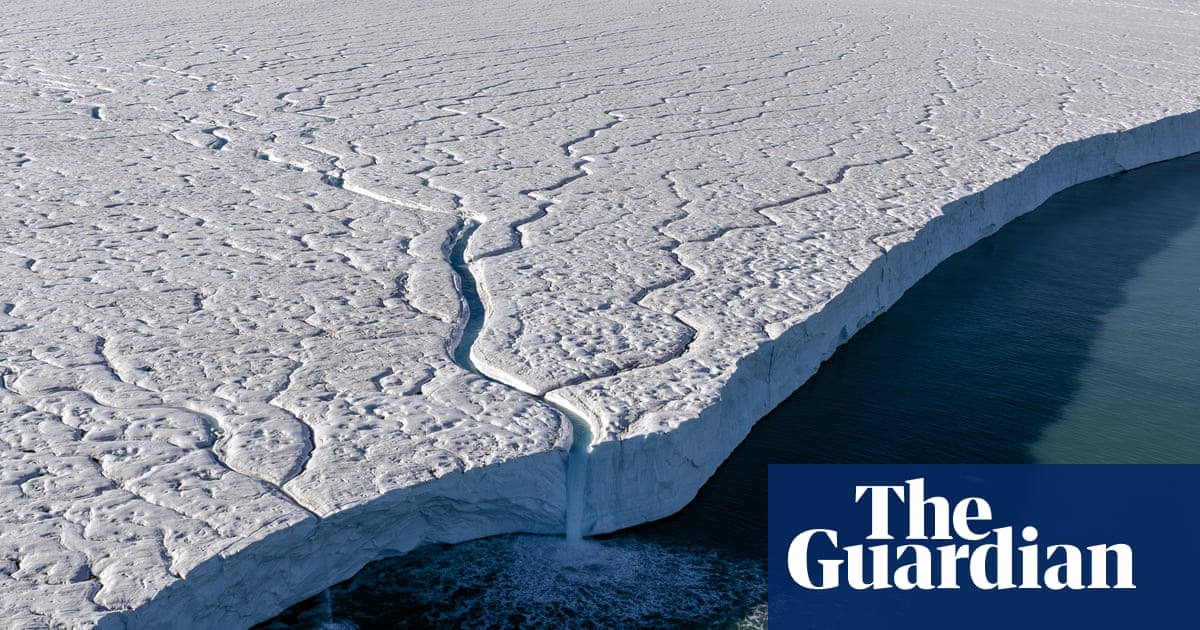When the glaciologist John Moore began studying the Arctic in the 1980s there was an abundance of suitable sites for him to carry out his climate research. The region’s relentless warming means many of those no longer exist. With theArctic heating up four times fasterthan the global average, they have simply melted away.
Forty years on, Moore’s research network, the University of the Arctic, has identified61 potential interventionsto slow, stop and reverse the effects of the changing climate in the region. These concepts are constantly beingupdatedand some will be assessed at aconference in Cambridge this week, where scientists and engineers will meet to consider if radical, technological solutions can buy time and stem the loss of polar ice caps.
“We want to get them down to maybe 10 [ideas] that it’s possible to proceed with. No one is talking about deployment yet,” Moore says, insisting that research is about “excluding the non-starters, the hopeless ideas”. “But we may have ideas that work if we start them now; if we don’t do something for 30 years, it could be too late.”
The best way to do that, he says, “is by evaluating them in a rational manner; otherwise it’s just guesswork or religion”.
Fromsunlight reflection methods(SRM) bybrightening Arctic clouds, stabilising ice sheets withhuge underwater curtainsto stop warm water melting glaciers, and evenbuilding vast mirrors in space, ideas that were once closer to science fiction have become increasingly mainstream.
“None of these ideas are going to fix everything,” says Moore,adding that part of the issue will be to weigh up the potential cost against the perceived benefit.
For Dr Shaun Fitzgerald, director of Cambridge University’s centre for climate repair, which is hosting the conference, it has been a 30-year journey – from working in emissions reduction to exploring more radical ideas to save the Arctic – as he became aware of “our futile progress” in slowing the climate crisis.
“I felt an obligation to further our knowledge in these other areas,” he says. Some of the more outlandish sounding ideas to be debated include the use of 10km-wide sunshades suspended between Zeppelin-sized airships andcreating corridors of anchored raftsto help Arctic wildlife that require ice floes. Other measures are already under way. Last year,British startup Real IceandDutch company Arctic Reflectionsundertook projects that pumped water on to the ice to refreeze it.
For many critics, the ethical and legal questions around many of these interventions make geoengineering a fraught subject. In 2021, for example, theSaami Council, which represents the interests of the Saami people across Finland, Norway, Sweden and Russia, joined NGOs incriticising the proposed pilotof a Harvard-ledprojectthat wanted to test plans forstratospheric aerosol injection(SAI). This methodinvolves introducing aerosols into the stratosphere to reflect sunlight and cool the planet by mimicking the effect of a large volcanic eruption. The plan was, the Saami Council wrote, a “real moral hazard”.
With sensitivities such as these in mind, the Cambridge conference also features contributions onethics,governance,sustainabilityand publicengagement.
Among theinterventionsidentified by Moore to slow, stop and reverse the effects of the climate emergency in the Arctic, some have been significantly researched already. But many ideas have barely made it off the drawing board, require enormous funds or have little chance of being done at sufficient scale.
The conclusions, so far, are that ocean-based concepts come with far more uncertainty, limitations and risks, while a few scored so low against most criteria that the study declares them to be “unsuitable for further consideration”.
One of these –modifying ocean currents– was first mooted during the cold war, when blocking off the Bering strait was suggested to make the Arctic more habitable. Years later, the climate activist Rolf Schuttenhelmmade a similar suggestionbut with the aim of increasing Arctic sea ice.
“It’s very easy to go wrong, and no one knows the right path,” Moore says. “You proceed all the time with local benefits, and in the end, hope there can be global benefits.”
Fitzgerald would not be drawn on which concepts he considers frontrunners, and says: “It’s really important that we maintain an open mind on different approaches.”
However, much of the attention is on SAI and marine-cloud brightening (MCB).Prof Peter Wadhams, head of Cambridge University’s Polar Ocean Physics Group, calls MCB a “very potent” method. “It has the significant advantage that you can turn off the process if it appears to have a harmful effect, as it is implemented on a smaller scale,” he says.
He is less enthusiastic about SAI, believing that it would be a dangerously long-lived intervention compared with MCB. Thickening sea ice, on the other hand, is impractical, he says, because of the huge amount of energy required. “It may work on a small scale,” he says. “But not on a scale that would make a difference. Marine-cloud brightening remains the best bet and the most carefully thought-out.”
Earlier this year,UK scientists announcedthat they will launch outdoor geoengineering experiments, including into marine-cloud brightening, as part of a £50m government-funded programme. However, opposition is building in some quarters – in response to a petition, adebate was held in the UK parliamentthis week on making geoengineering illegal, while in the US, the Tennessee state legislature has banned it entirely.
Tocritics who say potential catastrophes outweigh benefits, Fitzgerald says: “The risks of not doing something need to be compared against the risks of trying to do something. The research has to continue at pace because of the pace of climate change.”
He adds: “If we think it’s bad now, we’ve got to think about the next 100 or so years.”
